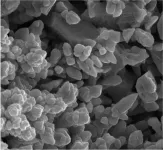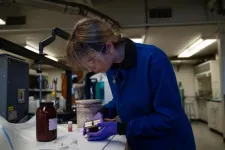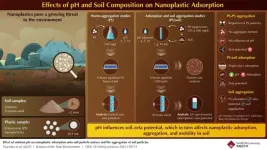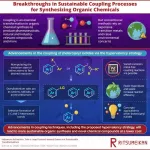Vehicle-mounted wireless power transfer: ensuring safety through magnetic field management
2025-04-09
(Press-News.org)
A comprehensive study has examined the magnetic field emissions (MFE) from vehicle-mounted wireless power transfer (WPT) systems, providing critical insights for ensuring user safety during electric vehicle charging. As wireless charging technology gains popularity for fleet vehicles and accessibility applications, understanding and controlling electromagnetic field exposure becomes increasingly important.
Researchers conducted extensive physical measurements around a vehicle equipped with an in-house designed WPT system, examining how various factors affect magnetic field emissions where users might be positioned during charging operations. The study specifically investigated:
- Alignment effects: How vehicle positioning relative to the charging pad impacts field strength
- Power transfer levels: Relationship between charging power and magnetic field intensity
- Measurement positioning: How probe height and distance affect readings
- Vehicle components: Contribution of high-frequency cables to overall field emissions
The study evaluated measurements against multiple international safety guidelines, including ICNIRP 1998, ICNIRP 2010, and ISO 14117. Results showed that during normal operation with good alignment at 10 kW power transfer, magnetic field emissions remained within all recommended exposure limits. Even during misalignment scenarios, the system only marginally exceeded the most stringent ICNIRP 1998 limits in small regions, while remaining well within the boundaries of other standards.
The research revealed several important considerations for wireless charging system designers:
1. Field distribution patterns: Highest field levels were measured close to the ground, opposite the air gap between vehicle and ground pads
2. Misalignment effects: Vehicle misalignment increased magnetic field emissions, though the system's DC-DC efficiency remained relatively stable
3. Power scaling relationship: At higher power transfer levels, magnetic field emissions increased at a lower rate than the corresponding increase in primary coil current
4. Cable shielding importance: Unshielded high-frequency cables within the vehicle significantly contributed to field emissions
The study also validated an approach combining physical measurements with finite element method (FEM) simulation. Using actual coil currents measured from the vehicle-installed WPT system, researchers created simulations that successfully predicted magnetic field trends, though they noted that accurate modeling requires inclusion of vehicle installation features. For physical measurements, the research highlighted the importance of taking readings at multiple points around the vehicle perimeter to capture the complete field profile, as localized components like unshielded cables can create significant variations in field strength.
This research provides valuable guidance for WPT system designers, installers, and regulatory bodies working to ensure the safe deployment of wireless charging technology. The findings suggest that with proper design considerations and installation practices, wireless charging systems can operate within established safety guidelines even at substantial power levels.
As wireless charging becomes more prevalent in electric vehicle applications, these insights will help ensure that the technology can be implemented without compromising user safety, while still delivering the convenience and accessibility benefits that make it an attractive alternative to traditional plug-in charging methods.
END
[Attachments] See images for this press release:

ELSE PRESS RELEASES FROM THIS DATE:
2025-04-09
Cancer diagnoses traditionally require invasive or labor-intensive procedures such as tissue biopsies. Now, research published in ACS Central Science reveals a method that uses pulsed infrared light to identify molecular profiles in blood plasma that could indicate the presence of certain common cancers. In this proof-of-concept study, blood plasma from more than 2,000 people was analyzed to link molecular patterns to lung cancer, extrapolating a potential “cancer fingerprint.”
Plasma is the liquid portion of blood, depleted of any ...
2025-04-09
Wear and tear on plastic products releases small to nearly invisible plastic particles, which could impact people’s health when consumed or inhaled. To make these particles biodegradable, researchers created plastics from plant starch instead of petroleum. An initial study published in ACS’ Journal of Agricultural and Food Chemistry shows how animals consuming particles from this alternative material developed health problems such as liver damage and gut microbiome imbalances.
“Biodegradable starch-based plastics may not be as safe and health-promoting as originally assumed,” ...
2025-04-09
Iron and its alloys, such as steel and cast iron, dominate the modern world, and there’s growing demand for iron-derived products. Traditionally, blast furnaces transform iron ore into purified elemental metal, but the process requires a lot of energy and emits air pollution. Now, researchers in ACS Energy Letters report that they’ve developed a cleaner method to extract iron from a synthetic iron ore using electrochemistry, which they say could become cost-competitive with blast furnaces.
"Identifying oxides which can be converted to iron metal at low temperatures is an important ...
2025-04-09
University of Oregon chemists are bringing a greener way to make iron metal for steel production closer to reality, a step towards cleaning up an industry that’s one of the biggest contributors to carbon emissions worldwide.
Last year UO chemist Paul Kempler and his team reported a way to create iron with electrochemistry, using a series of chemical reactions that turn saltwater and iron oxide into pure iron metal.
In their latest work, they’ve optimized the starting materials for the process, identifying which kinds of iron oxides will make the chemical reactions the most cost-effective. That’s a key ...
2025-04-09
Plastics are everywhere—from packaging and textiles to electronics and medical devices. As plastic waste breaks down, it releases microscopic particles that can penetrate our ecosystems, hinder plant growth, and potentially transfer harmful pollutants to organisms, including humans. Therefore, these plastic particles are a potential threat to the ecosystem, especially in their nanoparticulate form (1–100 nm diameter), which can penetrate the environment through different routes, including the soil beneath our feet.
With this in mind, a team of researchers from Japan set out to study the migration behavior of nanoplastics ...
2025-04-09
Coupling reactions are among the most transformative tools in organic chemistry, enabling the formation of crucial chemical bonds in pharmaceuticals, agrochemicals, and advanced materials. Since their introduction, they have been one of the backbones of modern organic synthesis. However, these methods have long relied on environmentally taxing transition metal catalysts, such as palladium, which are often scarce, costly, and generate unwanted byproducts.
The limitations of conventional coupling methods have prompted researchers to seek alternative strategies that better align with the principles of green and sustainable chemistry ...
2025-04-09
Amid deepening inequalities and escalating crises, including climate change, biodiversity loss and pollution, a new United Nations report presents a bold approach for change.
The 2025 Interconnected Disaster Risks report, Turning Over a New Leaf, issued by the UN University’s Institute for Environment and Human Security (UNU-EHS), shifts focus from diagnosing problems to mapping out solutions. It establishes that many of today’s solutions are surface-level fixes, and that to create ...
2025-04-09
COLUMBUS, Ohio – Researchers at The Ohio State University Wexner Medical Center and College of Medicine have discovered a new way that neurons act in neurodegeneration by using human neural organoids – also known as “mini-brain” models – from patients with frontotemporal lobar degeneration (FTLD).
Understanding this new pathway could help researchers find better treatments for FTLD and Alzheimer’s, the two most common forms of dementia that lead to cognitive decline.
Researchers used advanced techniques to study neurons from ...
2025-04-09
A pivot from fossil fuels to clean energy technologies by 2060 would improve energy security and reduce trade risks for most nations, according to an April 9 study in Nature Climate Change.
Lithium, nickel, cobalt, copper, and rare earth minerals are among the prized materials for countries and corporations racing to secure supplies for energy systems that do not add greenhouse gases to our atmosphere. Unlike fossil fuels, natural reserves of these materials are most concentrated in the Global South, shuffling the geopolitics of energy and global trade.
“Most people ...
2025-04-09
New research from the University of Sydney has revealed poor oral health is significantly associated with higher instances of migraines, abdominal and body pain in women.
Published in Frontiers in Pain Research, the world-first study identified specific oral microbes correlated with certain pain conditions, suggesting a potential relationship between the oral microbiome and the nervous system.
The findings highlight the importance of good oral health to potentially mitigate pain and improve overall wellbeing, prompting further exploration into the role of oral microbiota in chronic unexplained ...
LAST 30 PRESS RELEASES:
[Press-News.org] Vehicle-mounted wireless power transfer: ensuring safety through magnetic field management






